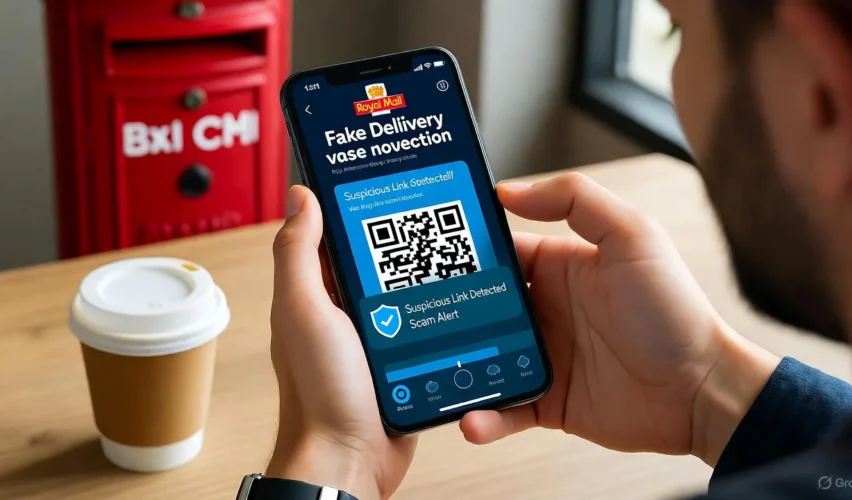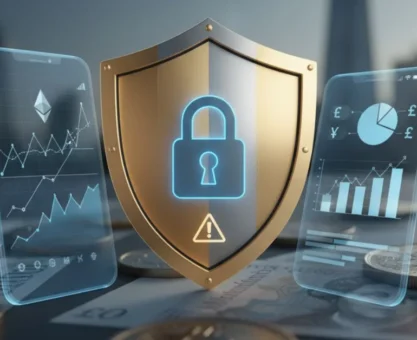How to Tell the Difference Between Fake Delivery Texts and QR Code Payment Scams in the UK
Category: Scams & Consumer Protection • Region: United Kingdom • Intent: Informational
You know that little heart attack moment when your phone buzzes and says, "Your package is ready for delivery—click here to confirm"? Last Christmas, I nearly fell victim to a scam. This article will assist you in identifying warning signs before scammers exploit you, by teaching you how to identify fake delivery texts and QR code payment scams in the UK.
What does "How to Spot Fake Delivery Texts and QR Code Payment Scams in the UK" mean?
Let's get started with the basics. Scammers send fake delivery texts that look like they come from well-known delivery companies like Royal Mail, DPD, or Hermes. They usually have a link or QR code that says you need to "pay a small delivery fee" or "rearrange delivery." When you click on it, you are taken to a phishing page that is meant to steal your personal and banking information.
On the other hand, QR code payment scams represent a novel approach. Criminals put fake QR codes on delivery cards, posters, and even in fake emails. When you scan them, your phone goes to a fake payment page, or worse, it installs malware on its own.
It's like someone switching the plug on your kettle with a live wire. When you touch it, everything looks normal.
Why is it important to know how to spot fake delivery texts and QR code payment scams in the UK?
These scams appear to be persistent. According to UK Finance, Britons lost more than £1.17 billion to fraud in 2024. Delivery and QR-related scams were among the fastest-growing types of fraud.
Here are some reasons why you should care:
- Scammers are getting better at what they do. They copy fonts, logos, and tone so well that you would think Royal Mail sent that message.
- They take advantage of urgency. Words like "final delivery attempt" or "parcel held due to unpaid fee" make you act before you think.
- Even people who know a lot about technology fall for it. Just because you know how to clear your browser cache doesn't mean you're safe.
- Many marketers don't know as much about psychology as fraudsters do. They use fear, impatience, and FOMO, which stands for "fear of missing out" on your package.
A Step-by-Step Guide to Using "How to Spot Fake Delivery Texts and QR Code Payment Scams in the UK"
If you follow this simple routine, it will be easier to spot these scams:
- 1. Stop Before You Tap
Don't worry if the message says your package can't be delivered. First, look at your most recent online orders. Is the sender the same as the courier for that order? - 2. Verify the Sender ID
Real businesses use official domains. For instance: real: noreply@royalmail.com fake: delivery-alert@royalmail-uk.help
It's fake if the address looks like a kid typed it out. - 3. Don't click, just hover.
Please press and hold the link without opening it. The URL preview will show you where you're really going. If you go to a site apart from the company's official one (like royalmail.com), it's probably not real. - 4. Don't ever pay a "redelivery fee."
Courier companies never ask for small fees by text or email. If a message asks for £1.50 or £2.99, it's a trap. - 5. Look over QR codes cautiously.
Please ensure that the QR code on a delivery card is printed rather than a sticker. Scammers often put fake ones on top of real ones. Instead, use the official app or website of your courier. - 6. Tell someone.
Please forward the fraudulent message to 7726, a complimentary number for reporting spam utilized by UK networks, or report it online to Action Fraud (www.actionfraud.police.uk).
A Real-Life Example: My Nan Outsmarted a Scammer
"DPD: your parcel can't be delivered until you pay £1.99," said a message to my 72-year-old grandmother. She was halfway through getting her debit card when she saw something strange: the link ended with ".org" instead of ".co.uk."
What did she say? "Nice try, love, but I've been around longer than your site." She got rid of it and told someone about it. A week later, the BBC ran a story about the same phishing domain. Nan 1, thieves 0.
The Benefits of Knowing: "How to Spot Fake Delivery Texts and QR Code Payment Scams in the UK"
You:
- Keep your identity and bank accounts safe from theft.
- Don't let data breaches happen that could put your devices at risk.
- Get more confident online—you'll be smart about scams, not scared of them.
- Tell your family and friends what you know to help keep them safe.
In this case, knowledge isn't just power; it's protection.
Things to Remember and Limitations
Even the most careful people can make mistakes. Fraudsters are always trying out new ways to trick people, like using deepfake voices or cloned customer service numbers.
Remember these things:
- Scammers can fake phone numbers, so a call from "Royal Mail" might not be real.
- Spam filters aren't always right, so don't trust them.
- QR scams are also going offline. There are fake posters, delivery slips, and even "smart" parking meters.
It's like playing whack-a-mole on the computer. You knock one down, and another one comes up.
Questions and Answers About "How to Spot Fake Delivery Texts and QR Code Payment Scams in the UK"
Q1: What should I do if I get a fake delivery text in the UK?
Please forward it to 7726 (which corresponds to "SPAM" on your phone) and then report it to Action Fraud.
Q2: Would it be possible to hack my phone by scanning a QR code?
Yes, malicious QR codes can send you to sites that install malware or trick you into giving them your login information.
Q3: What if I clicked the link by accident?
If you have entered any payment information, please disconnect from Wi-Fi immediately, conduct a security scan, and contact your bank.
Q4: Are all of Royal Mail's text messages fake?
No, some are real, but official ones always come from a verified sender and never ask for money.
Q5: Can people who are trying to trick you use WhatsApp or iMessage?
Yes, for sure. Instead of regular SMS, many delivery scams now spread through messaging apps.
Safety Tips
- Put a trustworthy antivirus app on your phone.
- Don't use links in texts to check deliveries. Always use your retailer's order history.
- Please refrain from sharing your personal or banking information through unsolicited links.
- Keep your device's software up to date; patches often fix holes that scammers use to get into your device.
- Teach your older relatives about these things; they are often the targets.
Links to Other websites.
- Action Fraud UK: Report a Scam
- How to Tell Ofcom About Suspicious Texts
- Consumer Protection from Citizens Advice
- The 2024 Fraud Facts Report from UK Finance
Take Action
Don't allow scammers to win. Tell someone you care about this guide. It could be your parents, coworkers, or a friend who loves to shop online. The fewer people who fall for fake delivery texts and QR code payment scams in the UK, the more people know how to spot them.
Be on the lookout, stay sharp, and remember that if something smells fishy, it probably is.
Want more UK scam alerts? Subscribe to our newsletter for monthly updates and step-by-step protection checklists.














